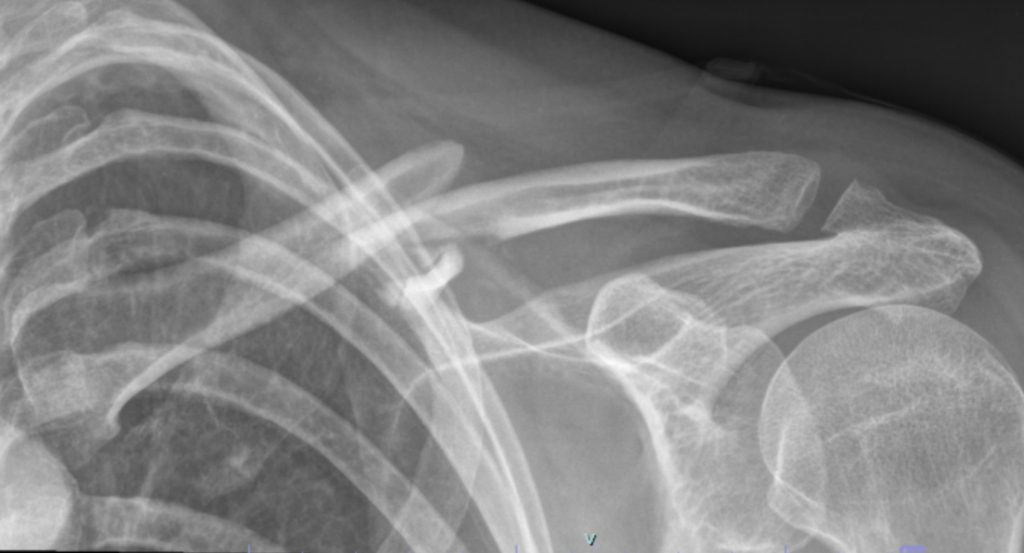Cycling is becoming ever more popular. A 2015 survey showed that cycling is the fifth most popular sport in Australia (behind walking, gym, swimming and running), with more than two million participants. Cycling in Geelong, the Bellarine Peninsula and the Surf Coast is no exception, with many great and scenic road cycling routes and challenging mountain bike trails.
With the thrill of travelling at speed comes the risk of injury. Whilst many parts of the body can be injured, damage to the clavicle or “collarbone” is prevalent. The three common injuries are fracturing of the mid clavicle, dislocation of the clavicle and a fracture of the outer end of the clavicle (effectively a combination of the two). All of these are “high energy” trauma.
Many clavicle fractures can be treated satisfactorily with a sling, then rehabilitation once the fracture has healed. However, surgery may be the better option for two types of fracture patterns. First, as mentioned, many cycling falls result in a fracture in the middle of the clavicle that is widely displaced or in several pieces or both. The second fracture pattern occurs at the outer end of the collarbone. These are often associated with ligament damage that causes displacement of the bone fragments with a reduced chance of healing. Surgical fixation of these fractures usually results in higher healing rates, faster healing times and more rapid restoration of shoulder function.
The other common injury mentioned above is a dislocation of the end of the clavicle, known as an acromioclavicular (AC) joint dislocation. Commonly cycling injuries result in a severe dislocation, with a significant step between the collarbone and the acromion easily visible. These high-grade injuries may require surgery. At surgery, the joint is reduced and held with tapes that secure the collarbone.
For information on how to book a consultation with Dr. Brown, please visit our Appointments page.


